Needlestick Safety that Makes Healthcare Safer
Needlestick injuries are preventable. Daniels Health helps hospitals and healthcare facilities protect their people with reusable sharps containers, compliant sharps disposal programs and a proven approach to infection prevention. Together, we make healthcare safer.
The Human Cost of Needlestick Injuries
A needlestick injury isn’t just a momentary lapse: it’s a potential life-changing event. The physical impact can mean months of testing and treatment. The emotional toll can include fear, anxiety and lost confidence at work. Each injury also carries a financial cost: time off, testing and administrative burden.
At Daniels Health, we believe no healthcare worker should have to experience this. Our mission is simple: to make healthcare safer through smarter, safer sharps disposal.
New Research Study Confirms: Sharps Injuries Still a Serious Concern

From 2019–2023 the Association of Occupational Health Professionals (AOHP) conducted the EXPO-S.T.O.P. “Fill the Gap” survey to understand the prevalence of sharps injuries in the United States. The largest study of its kind, EXPO-S.T.O.P. surveyed healthcare professionals at 369 hospitals across 34 states, finding that sharps injuries remain a persistent challenge in healthcare settings:
- All-Staff Sharps Injuries (SI): 2 out of every 100 hospital staff experienced a needlestick injury
- Nurse-Specific Injuries: From 2019-2020 nearly 4 sharps injury per every 100 nurses, dropping to 3.6 sharps injuries per 100 in 2023.
- Post-COVID under-reporting is a growing concern among survey researchers
Daniels Health is proud to be the exclusive sponsor of this important research, helping shine a light on the continued need for sharps safety and prevention.
A sharps container, no matter how safe, cannot eliminate the issue of needlestick injuries single handedly. While vital, it is a single piece of a much larger strategy. Industry reporting of needlestick injuries, sharps container placement, staff training, SED use and other preventative strategies all form part of the collective need of safeguarding healthcare workers from sharps injuries.
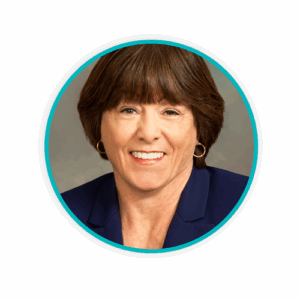
A True Story of Needlestick Safety Gone Wrong
“My injury didn’t occur because I was careless or distracted or not paying attention to what I was doing. This injury and the life-threatening consequences I am now suffering should not have happened.”
– Karen Daley – former president of the American Nurses Association
Karen Daley’s story is sadly not a “needle in a haystack” occurrence; her story is felt by healthcare practitioners around the globe. Eliminating sharps injuries relies on many factors: safer devices, safer sharps containers, leadership focus and safety process adoption. However, overall, as an industry and as a group of people committed to improving safety for healthcare workers, it requires a collaborative effort ensure that everyone comes home healthy at the end of the day.
Sharps Safety with a Proven Reusable Sharps Container
The Sharpsmart system from Daniels Health is the world’s safest, most sustainable reusable sharps container. Independently tested and clinically proven, Sharpsmart has reduced container-related needlestick injuries by up to 87% in peer-reviewed studies.
- Classified as a Safety-Engineered Device (SED)
- ISO 23907-compliant for sharps containment performance
- Designed with hands-free operation and leak-proof security
- Reusable and environmentally sustainable, reducing single-use plastics
Our goal: fewer needlestick injuries, stronger infection prevention and total sharps compliance for your facility.
Our Compliant Sharps Disposal Programs Prevent Injuries
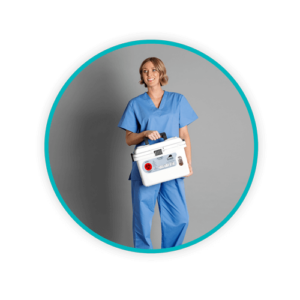 Effective sharps injury prevention is more than just a container. It’s a partnership. Daniels Health designs full-service, compliant sharps disposal programs that address every stage of sharps management.
Effective sharps injury prevention is more than just a container. It’s a partnership. Daniels Health designs full-service, compliant sharps disposal programs that address every stage of sharps management.
Our Comprehensive Approach
- Planning and Installation: We analyze your workflow to ensure optimal sharps container placement at the point of waste generation.
- Reusable Sharps Containment System: Containers that lock, prevent access and prohibit overfilling.
- Sharps Compliance Training: Education, resources and in-service support for all staff.
- Sustainable Disposal and Reliable Service: Regularly scheduled pick-ups and disposal that follow sustainable best practices.
- Data Reporting and Benchmarking: Real-time data collection and analysis to ensure benchmarks are consistently met.
With Daniels Health, you gain a sharps disposal company that partners with you to design safer, smarter, and fully compliant systems.
How to Prevent Sharps Injuries
Ensure you are trained in the procedure and the device.

Always use a sharps safety device where available.
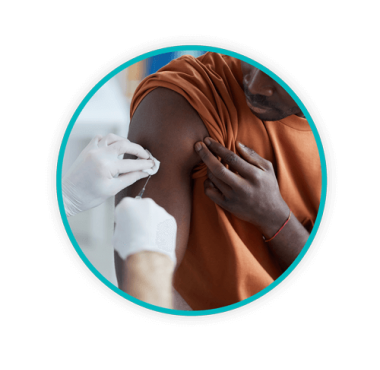
Before procedure, ensure a sharps container is close by, and the aperture is open and clear.
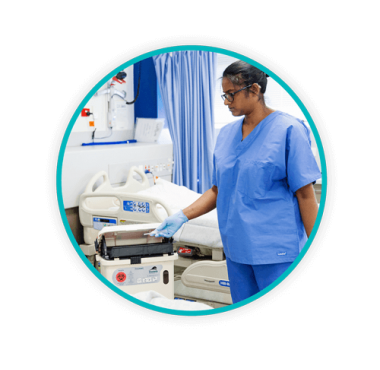
Immediately after use, activate the safety device and discard into a sharps container.
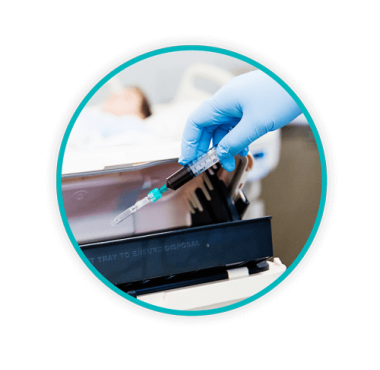
If you drop a sharp, never leave it for someone else to pick-up.

Ensure a sharps container is closed before you move it.
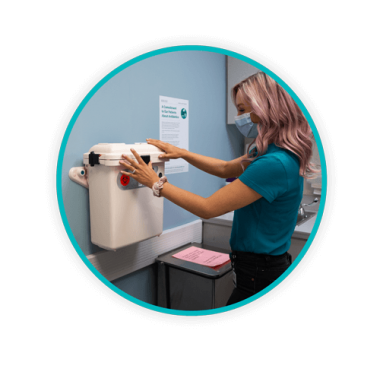
Never overfill a sharps container. Never.

Research + Educational Resources
-
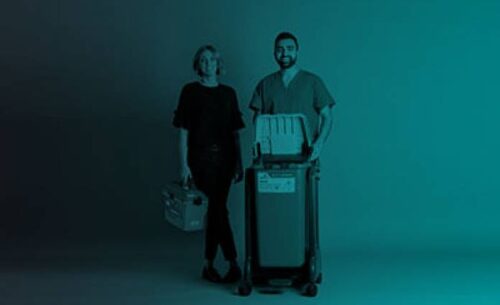
Research Article : Exposure Injury Reduction Strategies
This peer-reviewed study interviews clinicians to identify what measures are successful in reducing exposure to body fluid. Preventing the risk of BBP exposure.
Read more -
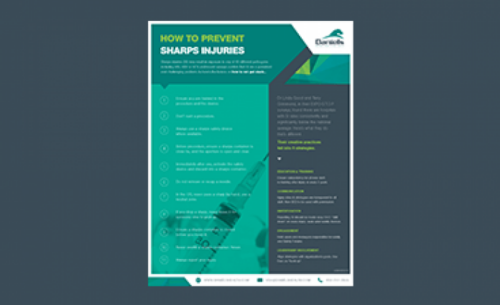
Educational Poster : Preventing Sharps Injuries
This educational poster serves as a guide on how to prevent sharps injuries.
Download Resource -
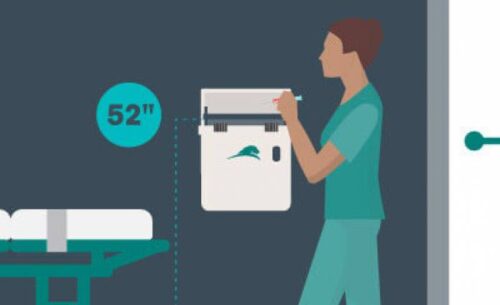
Blog : Safest Height for Wall Mounting Sharps Containers
Learn more about the NIOSH guidelines for the safe mounting height sharps containers
Read More -

Research Article : Use and Activation of SEDs
Many clinicians use Safety Engineered Devices – but are they always activated properly?
Read more -

Educational Poster : Sharps Post Injury Protocol
A guide on how to determine the severity of a sharps injury and what to do if a sharps injury occurs.
Download Resource -
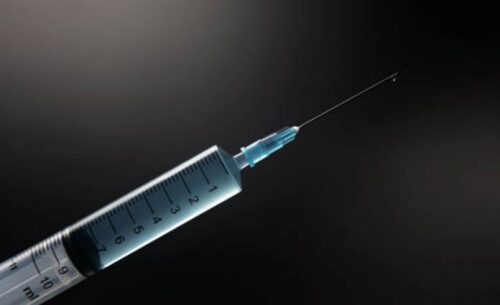
Blog : Strategies to Reverse Needlestick Injury Trend
There is an increased need for improved safety standards and awareness of the risks associated with BBFE incidences.
Read more -
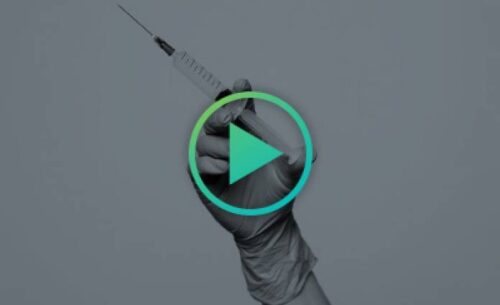
Video: How to Prevent Needlestick Injuries | 6 Clinical Tips
Needlestick injuries may result in exposure to any of 60 different pathogens including HIV, HBV or HCV. Recent surveys confirm that needlestick injuries are a persistent and challenging problem.
Watch Video
The Role Sharps Containers Play in Injury Reduction
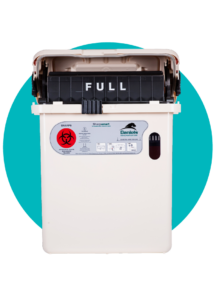 Daniels Sharpsmart, the world’s leading sharps disposal safety system, was the result of 5 years of R&D, clinical research, and the passion of our founder, Dan Daniels, to eliminate needlestick injuries.
Daniels Sharpsmart, the world’s leading sharps disposal safety system, was the result of 5 years of R&D, clinical research, and the passion of our founder, Dan Daniels, to eliminate needlestick injuries.
There is no sharps container in the United States today that rivals the Sharpsmart’s safety features, its clinical peer reviewed studies that prove needlestick injury reduction across years of research, or its global before-and-after safety and sustainability results. For decades, the Daniels Sharpsmart container has led the industry.
How Sharpsmart drives an 87% reduction in container-related needlestick injuries:
- Hand-restricted safety tray
- Inbuilt Overfill protection
- Temporary and permanent safety locks
- Impenetrable ABS plastic: no spill or penetration
“By converting to a Daniels Sharpsmart Container, container related needlestick injuries were reduced by 86.6%”
Peer Reviewed Study published in the American Journal of Infection Control
Essentials for Selecting a Safe Sharps Container
-

PRE-ASSEMBLED
Sharps containers should arrive pre-assembled, eliminating manual labor and sharps injury risk from incorrectly assembled containers.
-
POINT OF CARE USE
Sharps containers should be placed as close as possible to the point of sharps generation, with interchangeable mounting and movement capability
-

RESTRICTED ACCESS
A sharps container should be engineered with hand-restrictive access that prevents access to the disposed sharps.
-
OVERFILL PROTECTION
Overfill protection is a critical safety feature of a sharps container; a design that restricts the ability to dispose of sharps beyond the containers’ safe fill level.
-

INBUILT SECURITY LOCKS
Once secured, a sharps container should not be able to be forced open. Permanent locks should secure sharps from tampering and misuse.
-

PG2 CERTIFIED
Sharps containers should be certified to United Nations PG2 specifications for Transport of Dangerous Goods; securing sharps containers in transit.
-

REUSABILITY
Reusable sharps containers divert 33% of plastic from the sharps waste stream and have a significant impact on manufacturing, transport and supply chain emissions.
-
QUALITY CONTROL
STo eliminate bacterial growth, reusable sharps containers should undergo a multi-step robotic sanitization process, and rigorous quality control inspection.
Daniels Sharpsmart Containers
-
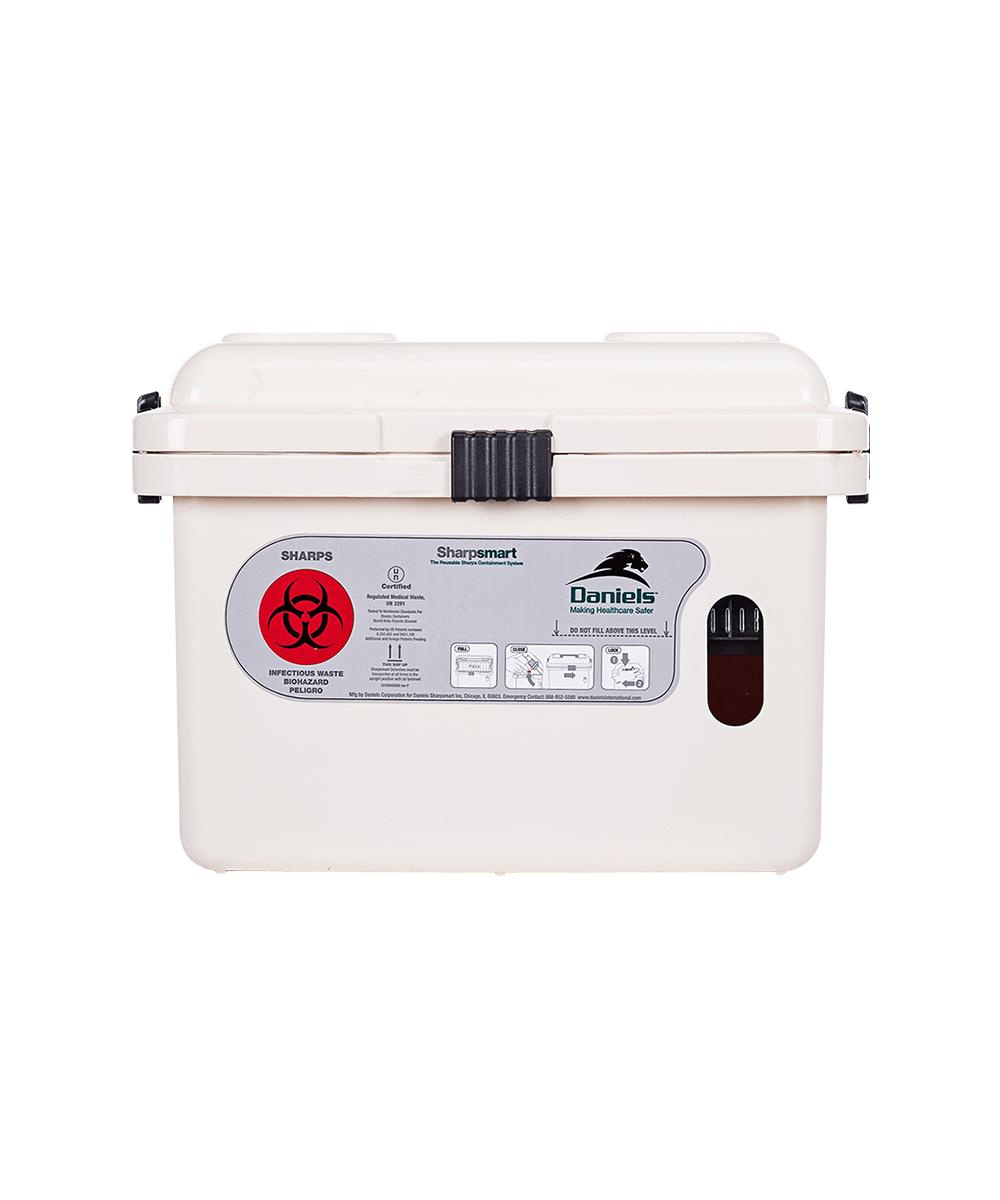
S14 | Sharpsmart Reusable Sharps Container
3.7-Gallon sharps container with a counterweighted safety tray and ‘no-hands’ access; ideal for patient room use.
Details -
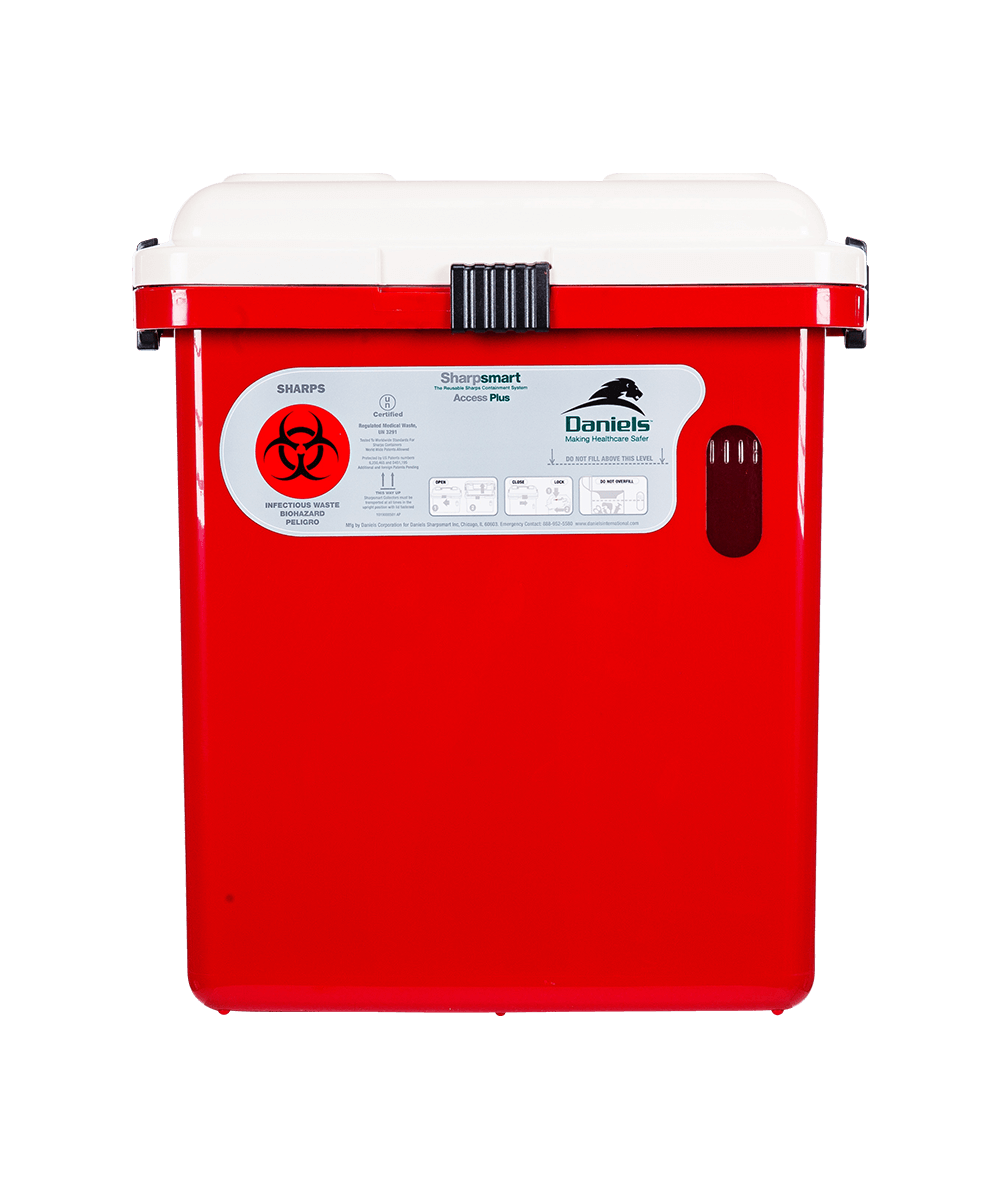
S22A+ | Sharpsmart Access Plus Reusable Sharps Container
5.8-Gallon sharps container. Designed without a tray for full access in secure areas.
Details -

P32 | Pharmasmart Reusable Pharmaceutical Waste Container
8.5Gallon pharmaceutical waste container with a counterweighted safety tray; ideal for major use in pharmacies, medication rooms, and wards.
Details -
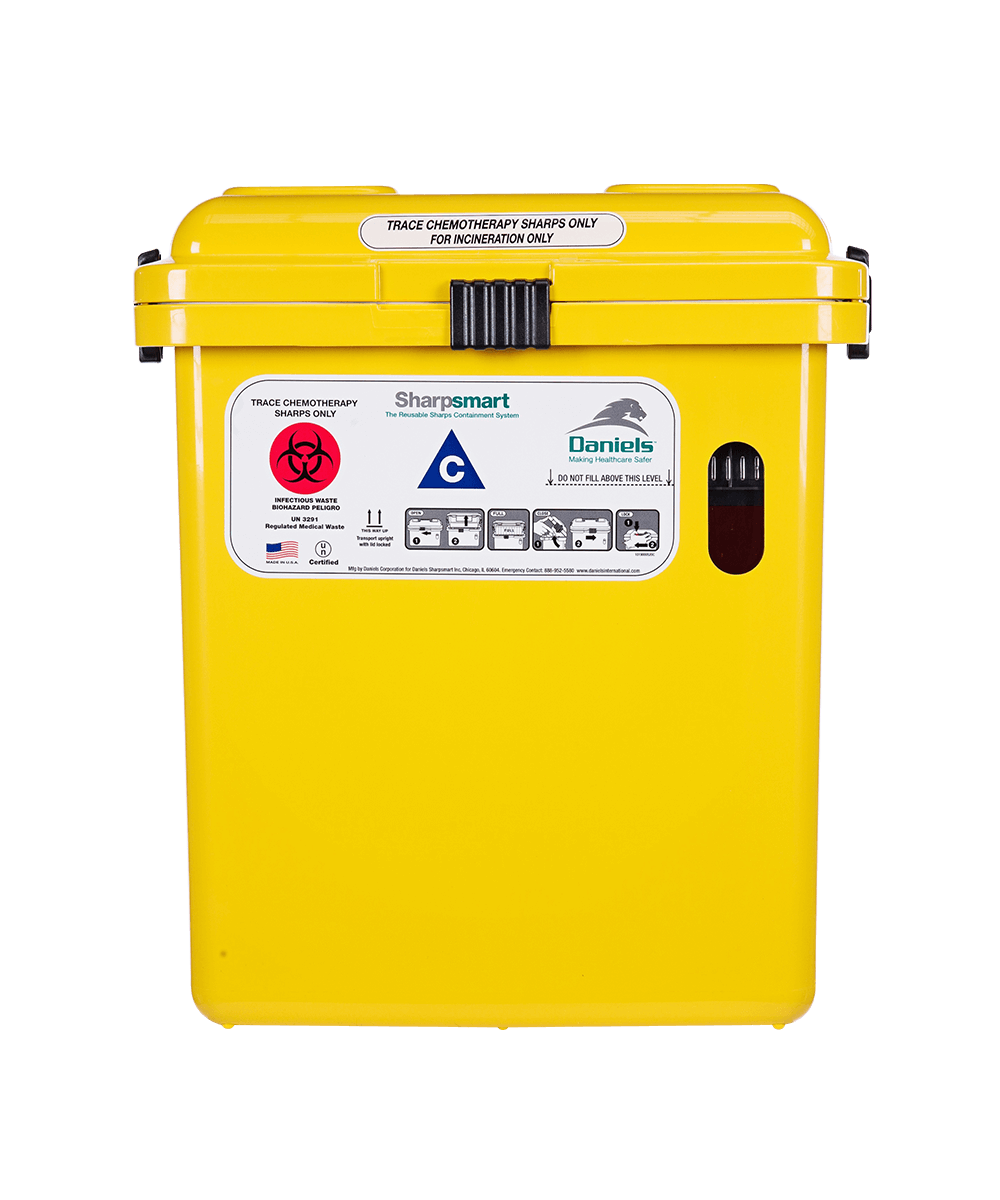
CT22 | Chemosmart Reusable Chemotherapy Waste Container
5.8 Gallon chemotherapy sharps container fitted with a gravity-balanced safety tray and no-hands access.
Details -
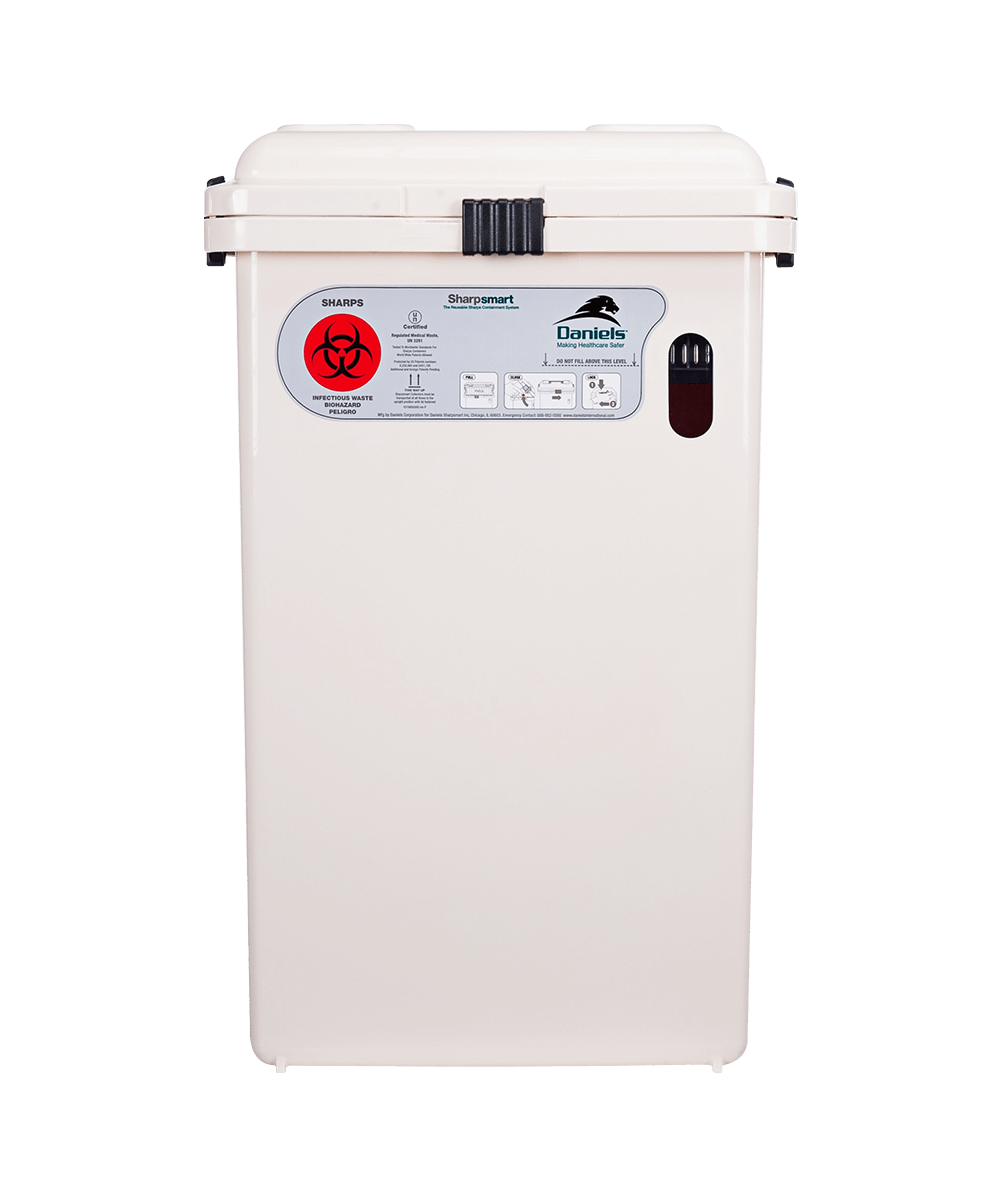
S32 | Sharpsmart Reusable Sharps Container
8.5-Gallon reusable sharps container with an inbuilt counterweighted safety tray
Details -
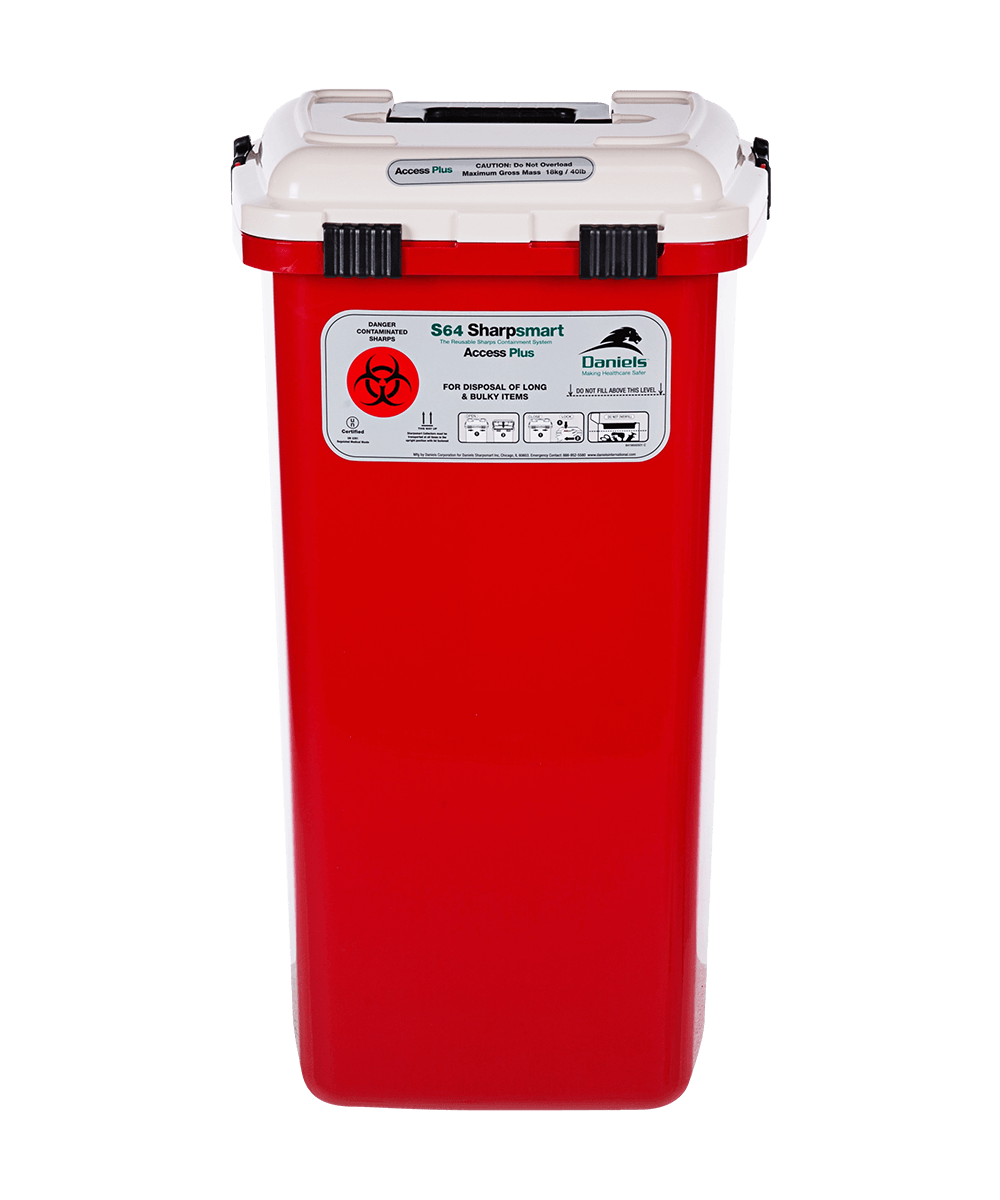
S64 | Sharpsmart Reusable Sharps Container
16.9-Gallon sharps container ideally suited to facilities that generate high volumes of sharps.
Details
Schedule a Demo
We would love to show you how our Sharpsmart system works. Call now to schedule an in-person or virtual demo.
Downloadable Resources
-

Mary Ogg
Double-gloving, just one of the strategies to reduce needlestick injuries. Learn more about administrative and work practice controls from Mary’s presentation.
Download Slides -
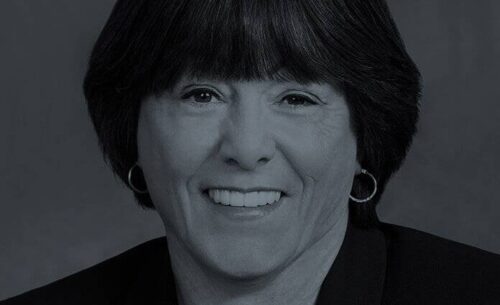
Karen Daley
Beyond the statistics, listen to the voices of healthcare practitioners who have suffered needlestick injuries and understand why complacency is simply not an option.
Download Slides -

Terry Grimmond
Spoiler alert: Sharps injury rates are not declining at the rate that they should be. Learn more about industry trends through Microbiologist Terry Grimmond.
Download Slides
Let’s Talk!
Your time is valuable, and we don’t want to play hard to get. You can either phone us directly on the details listed on our contact page, or feel free to fill out this short form and one of our team members will get back to you as quickly as possible.